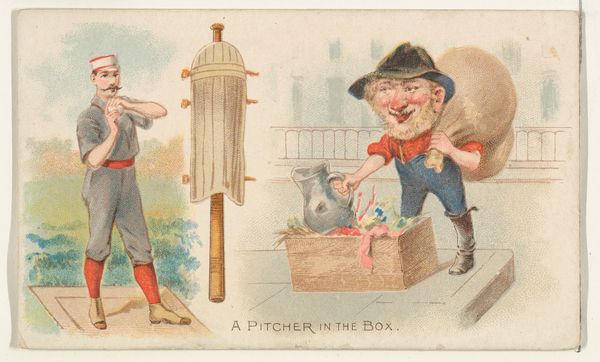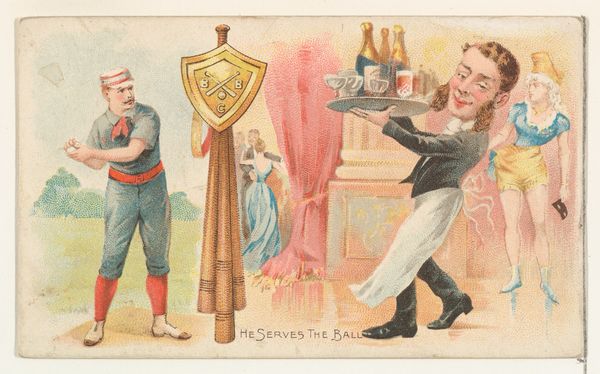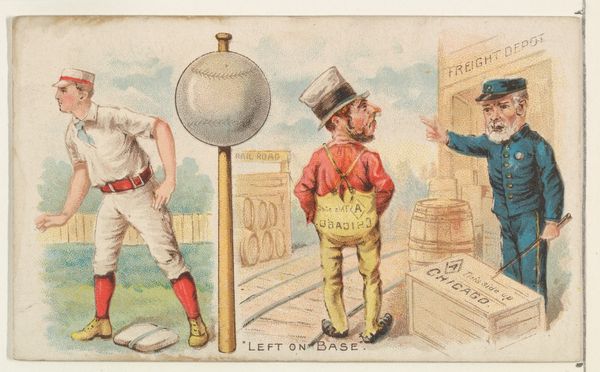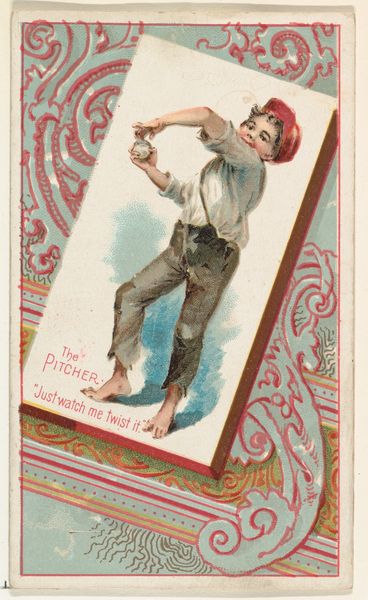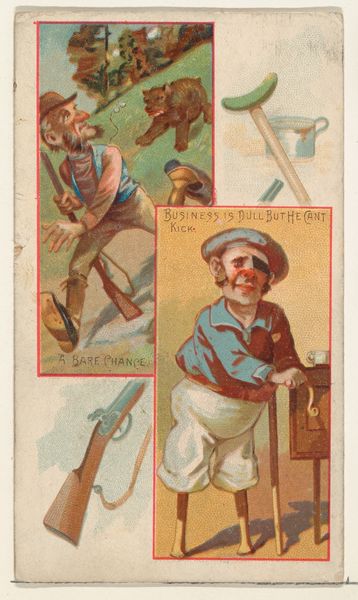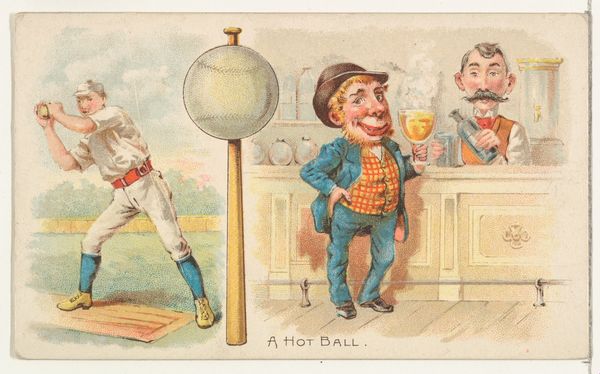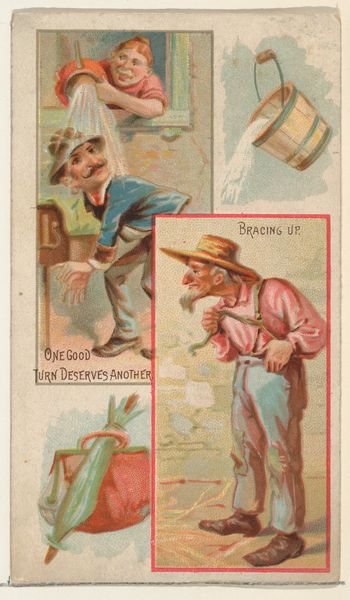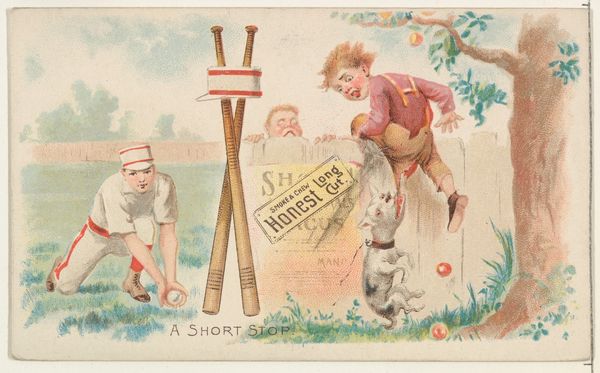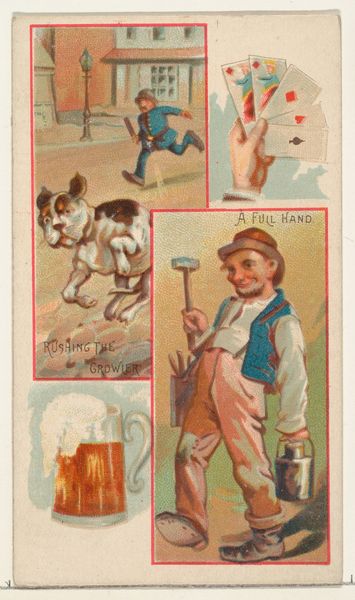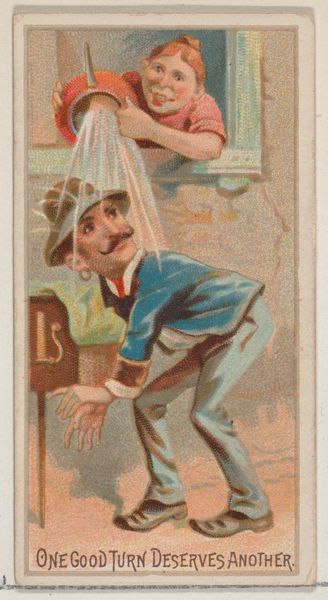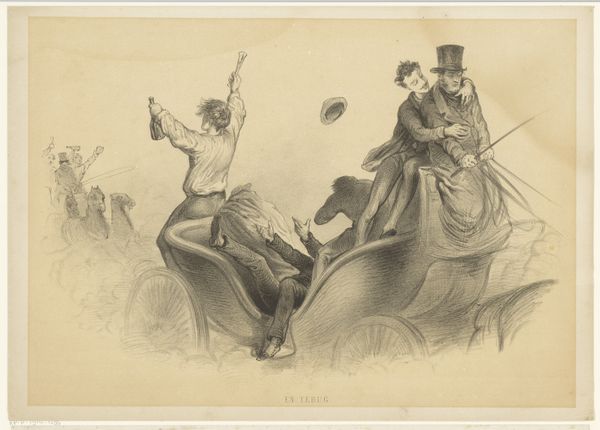
Stealing a Base, from the Talk of the Diamond set (N135) issued by Duke Sons & Co., a branch of the American Tobacco Company 1888
0:00
0:00
Dimensions: Sheet: 2 1/2 × 4 1/8 in. (6.4 × 10.4 cm)
Copyright: Public Domain
Editor: So, this is "Stealing a Base," a lithograph from 1888 by W. Duke, Sons & Co., which seems to be an advertisement. The imagery feels… jarring. What’s your take on this, considering the historical context? Curator: The juxtaposition is definitely striking. This belongs to a class of trade cards that reveal much about the cultural landscape of the late 19th century. Beyond simply advertising Duke’s tobacco products, the card tells us about prevailing attitudes and social structures of the time. Editor: Can you elaborate? The baseball player is clear, but the figure carrying the drum... Curator: Precisely. Notice how the card equates the ‘steal’ in baseball with, arguably, the racial appropriation happening here. This caricature of an African American, literally carrying the burden of advertisement, reflects deep-seated societal prejudices and the exploitative representation common in commercial imagery. This wasn't simply a neutral depiction; it perpetuated and normalized power dynamics. Editor: It’s unsettling to see that so blatant. So, is the baseball player almost presented as innocent against the other image? Curator: In a way, yes. The idealized image of sport, of 'Americana', contrasts sharply with the denigrating image reinforcing racist tropes. It shows the way advertising and popular culture both shaped and reflected ideologies of the era, even influencing perceptions and the construction of identity, both individual and national. How do you view the use of realism in presenting these conflicting themes? Editor: That's a crucial point. The realistic depiction, while artistically skilled, only serves to amplify the harmful message. It almost makes the stereotype feel more 'real' or 'valid' to the viewer. It is definitely not what I initially assumed it would represent! Curator: Exactly. This kind of visual material reminds us how images can actively participate in social injustice. Thinking critically about visual media remains crucial. Editor: Absolutely. Analyzing how these images circulated and the role they played in shaping public perception provides a chilling yet invaluable lesson. I learned a lot today; thank you.
Comments
No comments
Be the first to comment and join the conversation on the ultimate creative platform.
